RATING:
Pros: Extremely strategic battleground combat. Intriguing and unique card acquisition system. Accessible through your web browser.
Cons: Unfortunately no booster packs available so we don’t get to randomly draw a shiny. Simple graphics that are less flashy than some other competitors’ titles.
Score: TBD
Recently we were given the chance to play a closed beta of Wargaming’s new turn-based tactical card game World of Tanks Generals (WoTG), both free to play and accessible through your web browser the game is a blend of the strategy and “class” development we’ve seen in their typical shooter MMO’s and classic TCG features. One thing we will say at the head of this review, and something to consider again at the end, is that the game isn’t really a TCG, it concentrates more on tactical positioning and turn-based combat than normal card games do; read on to find out why.
At its core WoTG does share many similarities and features of other trading card games and so rightly sits in the genre, the fundamental objective is to destroy the enemies’ Headquarters, which has its own pool of hit points, minor attack value, miscellaneous traits and value to determine how many resources it begins with each turn. Destroy the HQ and you win the game. To compare it to more traditional fantasy TCGs the Headquarters is essentially your Hero /Champion and where Heroes normally equip artefacts and weapons in WoTG Headquarters can be fitted with Infantry units that will increase their attack power, defence rating and various other abilities. Players can also assemble their decks with a variety of Action cards to give their troops orders/buffs/heals or deal damage directly to played enemy units, essentially they are the Spells you would see in other games.
Finally the game of course has units, in this case Tanks, which are the main unit that will be placed onto the battlefield itself and players must try to fight their way past the oppositions units to attack the Headquarters. Units come in different shapes and sizes with a variety of different abilities, each of them having a resource cost to be played, attack/damage value and an armour/hit points value. So far it all sounds very familiar, however the difference is in the actual battlefield and the traits that the Tank Units have.
The battlefield itself is made up of a 5x3 grid, at opposing corners are the player Headquarters (your own in the bottom left, your opponent in the top right) and each turn players get to spend their accrued resources to play a card. When playing a Tank Unit card they can enter the battlefield from any adjacent Headquarters square that is unoccupied, either by enemy Tank Units or your own. Each turn as well as playing cards players also get to control the Tank Units that are in play, each tank is able to move one square at a time either horizontally or vertically and attack and adjacent square making a primary objective to get tanks adjacent to the enemy HQ (although HQs do have the ability to attack each other each turn). This now makes the battlefield more like a game of chess than a standard TCG, where normally the tactics focus on playing a card at the right time or lane switching to get a clear shot at the enemy Hero, WoTG is considerably more tactical in this regard and players must constantly try to outmanoeuvre each other with Tank Units being able to move both towards the enemy HQ or away from it.
This level of tactics is further emphasised by the different traits that various tanks have, falling into a few traditional classes such as Light, Medium and Heavy Tanks they subsequently have a similar trait, though often different attack and defence values. Light Tanks have the benefit of an increased square of movement, Medium Tanks can actually move diagonally as well as horizontally and vertically and Heavy Tanks benefit from higher hit points but do not get to counter attack enemies (where when you make an attack the enemy automatically deals its attack value back to you) if they have fired in their round. Tank Destroyers have the benefit of attacking enemies first and if their damage inflicted is enough to destroy a Tank then the enemy Tank does not get to inflict it’s counter attack damage, also SPGs have considerably longer ranges and can attack anywhere on the map providing an ally Tank Unit is adjacent to their target.
The types of cards available are dependent on your deck, created as a Division in one of the three key powers during WW2: USSR, the United States and Germany. Unlike other card games there is initially no obvious differentiation between the three nations and this became more apparent as we played through a handful of games not noticing any significant differences available to us or from our opponents in comparison to say a fantasy TCG where one faction may be able to resurrect enemies from the graveyard with necromancy or more focused on healing troops and improved defences.
The key differences start to come to light as players get deeper into the game and gain XP and Credits from fighting in matches or completing quests and beginning to go into each nation’s individual Research Tree; this element of the game, in our opinion, will either make it stand out or be its downfall. Essentially the process is that as you earn XP you can spend it in your preferred nations Research tree, a long list of technologies that fall in line with the technological development of the period for each nation; technologies typically branch off as a prerequisite to other more powerful and more expensive technologies similar to what players may have seen in the other Wargaming shooter MMO’s and is in many ways a class-based talent tree. Unlocking a technology gives you access to a new card to be added to your deck, however to acquire the card players must purchase it with credits, with a maximum of three cards of a single type available.
This system means a few things; firstly is that it still at least avoids a pay to win scenario, whilst players can purchase Tokens as their premium currency, which they can then convert into credits and subsequently purchase any card’s they must still unlock them by gaining XP, which cannot be purchased (though a XP/Credit boost can be bought using tokens) so it remains a pay for convenience system and doesn’t allow new players to have epic decks. Secondly, this takes out the random element of acquiring cards and deck building, so often even after months of playing other TCGs players are forced to play with cards that they do not particularly like having in their deck and are simply waiting to get hold of the more powerful cards that they really want. As every card is viewable and purchasable players can plan ahead on what type of deck they want and the means to get there, giving players a lot more control over the shape of their final deck without the need for filler cards simply waiting to be replaced.
The problem, or at least the worst aspect of the system, is that it is going to be all too likely that the highest ranked players are all using fairly similar decks, in the event that a particular deck seems extremely powerful it is too easy for other players to recreate it. Whilst this has always been the case with other TCGs it was the random element of getting such powerful cards that prevented copycat decks, but did however create a more chance-based unlevelled playing field. Fortunately simply having a powerful deck of cards won’t be enough to always dominate, the strategic chess like element also require player strategy and skill and knowing how to use that deck to its best abilities.
The final issue, and this is more a personal one that we believe is central to card games, is that the system doesn’t, at this stage at least, have any booster packs type of feature. Part of the fun of card games such as these is earning enough credits, gold, points to purchase a booster pack and looking over your newly acquired random cards, crossing your fingers that you draw a rare and legendary card that may tip your future games in your favour. It is an element that is central to TCGs and is one of the most fun aspects. However, as we said at the beginning of this article, World of Tanks Generals isn’t a classic TCG and with the system in place it removes the majority of random deck building and allows players to be more clinical and precise in their decisions, still we can’t help but feel it’s a missed opportunity and hopefully it’s something that might find its way into the game at a future date.
The game plays great, the convenience of it being in a web browser shouldn’t be overlooked as it’s one of the major drawbacks of many other turn-based card games, though we have to say that the graphics are a little on the simple side in comparison to similar type games and themes such as Ubisoft’s Panzer General Online (though the gameplay is completely different). We’re sure it will be a success but it will be interesting to see whether it appeals to the classic TCG crowd.. they do love their booster packs!
.
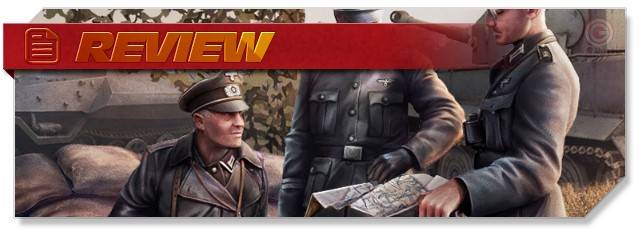
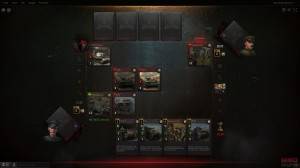
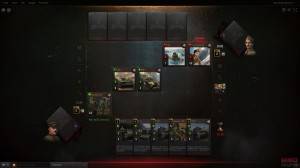
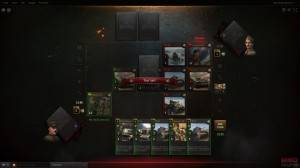
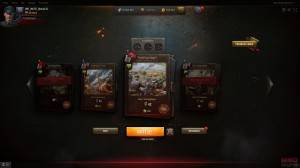
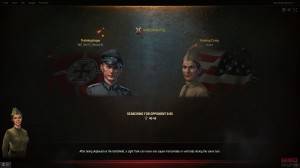
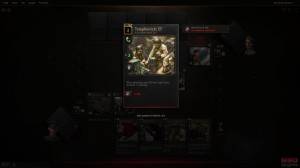
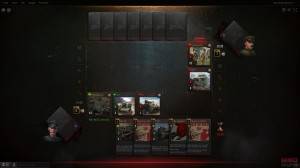
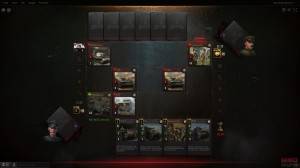


Deja tu comentario
You must be logged in to post a comment.